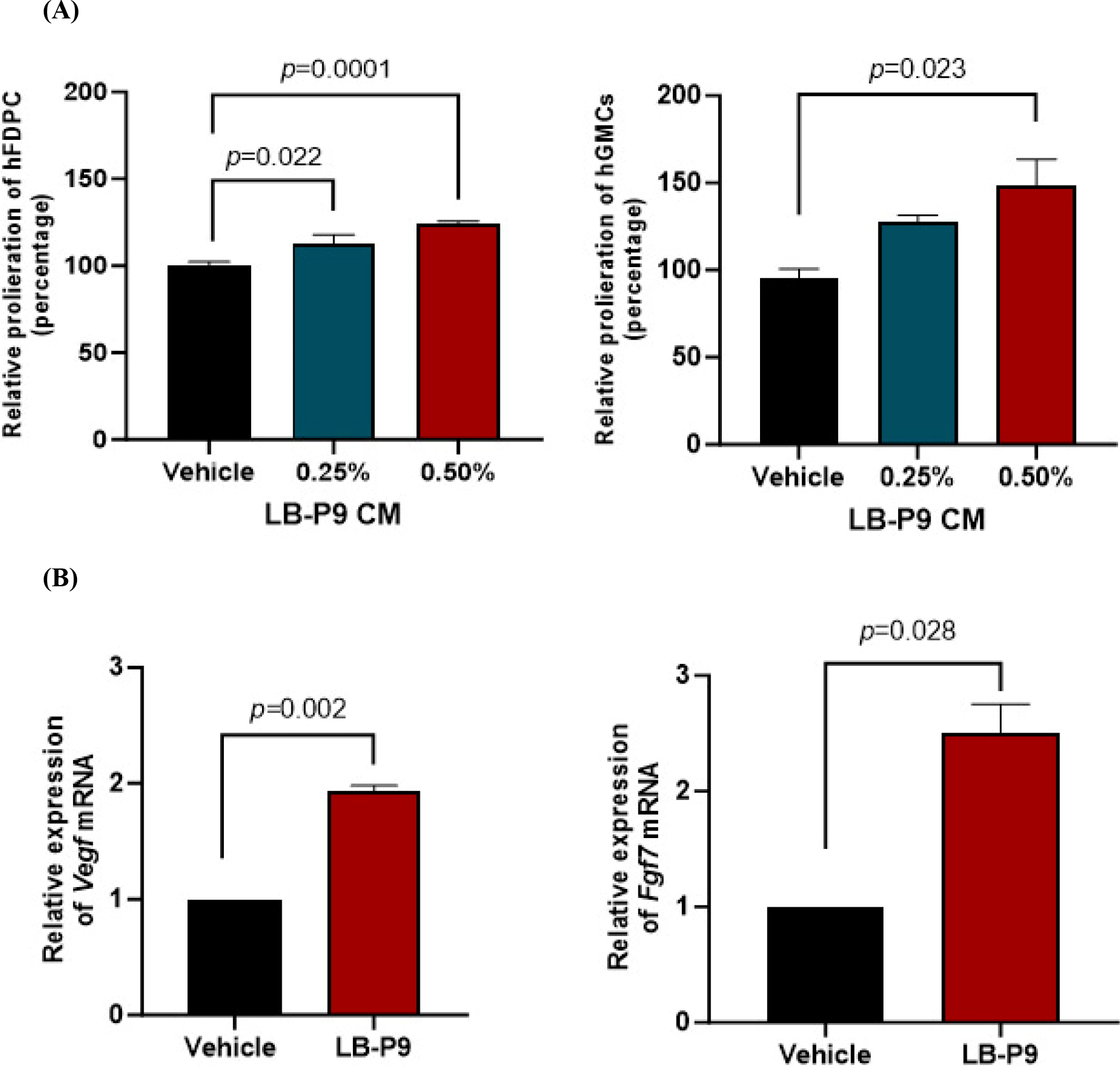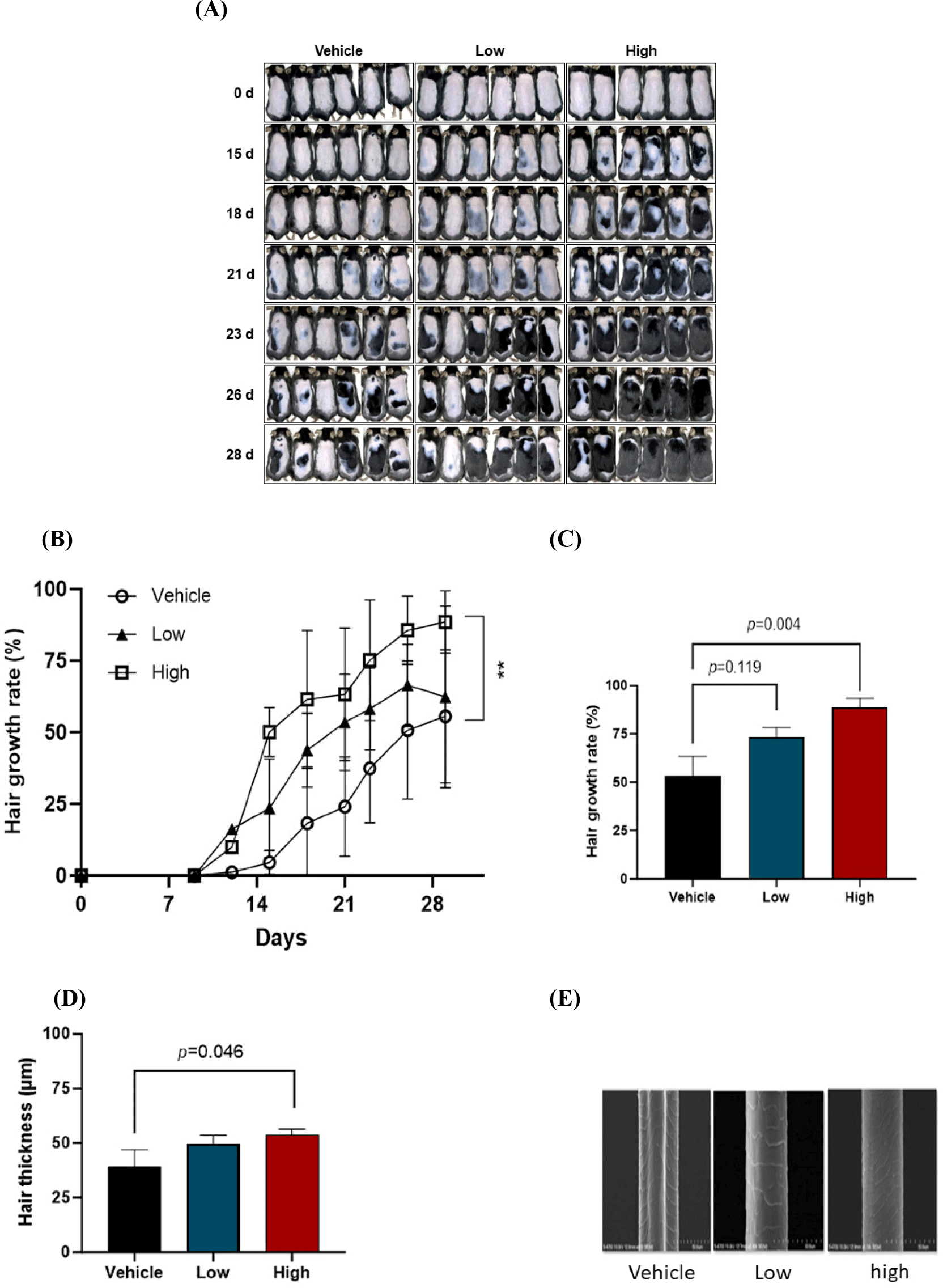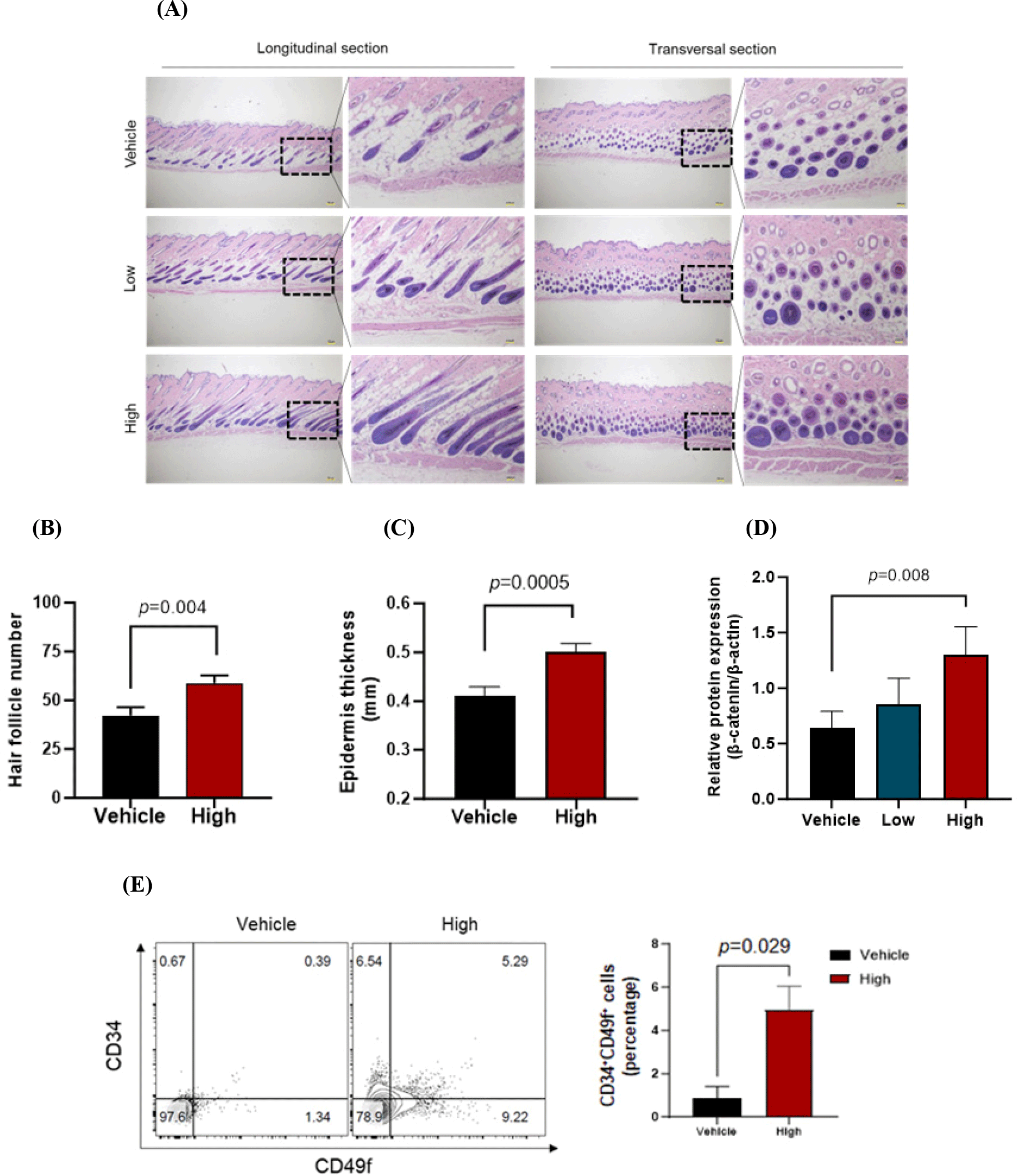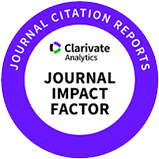Introduction
Hair loss is a common disorder that occurs in both men and women (Tamashunas and Bergfeld, 2021). This has resulted in increased interest in health and beauty, with particular emphasis on hair as a significant factor in assessing one’s appearance and attractiveness (Tamashunas and Bergfeld, 2021). At present, several chemical drugs, such as minoxidil and finasteride, are widely used for the prevention of further hair loss (Bajoria et al., 2023). However, several recent clinical studies have indicated that the clinical effectiveness of minoxidil or finasteride has remained low, with response rates of 35% or 48%, respectively (Bajoria et al., 2023). Also, unwanted side effects that include irritation, itchiness, and abnormal sexual function have been reported (Nestor et al., 2021). These limitations have encouraged the development of alternative treatment strategies.
Many studies now focus on developing specific probiotics products for use as a major tool to change human physiology related to well-being in life. The communication between host mucosal barrier cells and selective probiotics might create new signals that change important physiological parameters within specific tissues or organs after reach (Belkaid and Hand, 2014). These physiological changes by the consumption of particular probiotics were further explained by the results from the gut-specific organ axis (Dumas et al., 2018; Powell et al., 2017; Tripathi et al., 2018). In particular, recent findings in the gut-brain-skin axis have demonstrated that probiotics both control skin inflammation, and regulate hair follicle cycling or hair regeneration (Arck et al., 2010). Indeed, several previous experiments reported that the administration of particular probiotics might enhance hair growth (Lee et al., 2016; Nam et al., 2021; Park et al., 2020).
In the present study, we examined the effect of Lactilactobacillus curvatus LB-P9 on hair regeneration. Both the in vitro and in vivo data suggest that LB-P9 administration might promote hair regeneration by facilitating dermal papilla growth via the enhancement of hair growth factor production. The results of this study may provide additional evidence to define the molecular mechanisms of how the consumption of probiotics enhances hair growth.
Materials and Methods
L. curvatus LB-P9, originally isolated from Kimchi, was obtained from the World Institute of Kimchi (Gwangju, Korea) via a technology transfer agreement. Species level of LB-P9 was identified by the alignment of the obtained 16S rRNA sequence with the Genbank database (http://www.ncbi.nlm.nih.gov/BLAST). The stock of LB-P9 was deposited with accession number KCCM12011P at Korean Culture Center of Microorganisms (KCCM, Seoul, Korea). LB-P9 was kept as frozen stock in MRS broth (BD Difco, Sparks, MD, USA) containing 30% (v/v) glycerol at –80°C, until use. To thaw the frozen stock, LB-P9 was incubated in MRS broth at 30°C for 24 h, and then harvested by centrifugation (685×g, 20 min). The cell pellets were washed, and resuspended in sterile phosphate-buffered saline (PBS) for in vitro assays and animal studies.
Human hair follicle dermal papilla cells (hFDPCs) were purchased from PromoCell (Heidelberg, Germany). The hFDPCs were cultured in FDPC growth medium supplemented with 4% (v/v) fetal calf serum, 0.4% (v/v) bovine pituitary extract, human recombinant basic fibroblast growth factor (1 ng/mL), and human recombinant insulin (5 μg/mL; PromoCell). Human hair germinal matrix cells (hGMCs) were obtained from ScienCell Research Laboratories (Carlsbad, CA, USA). The hGMCs were cultured in mesenchymal stem cell medium supplemented with 5% (v/v) fetal bovine serum, and 1% (v/v) mesenchymal stem cell growth supplement (ScienCell Research Laboratories). Both hFDPCs and hGMCs were cultured at 37°C in a humidified atmosphere of 5 % CO2.
The 1×109 colony forming unit (CFU)/mL of LB-P9 was incubated with 50 mL of serum-free hFDPC culture medium (PromoCell) for 24 h at 30°C. After culture, LB-P9 conditioned medium (CM; pH=7.2) was collected from the culture supernatants by centrifugation at 685×g for 10 min, filtered through a Millipore membrane filter (pore size=0.22 μm), and stored at −80°C, until use.
Both hFDPCs (1×104 cells/well) and hGMCs (1×104 cells/well) were plated into a 96-well plate in culture medium. After 24 h, LB-P9 CM was added at concentration of 0.25% or 0.5%, adjusted the final culture volume in 200 μL/well and cultured for an additional 24 h. After culture, cell proliferation was evaluated using the WST-8 cell viability assay kit (Biomax, Guri, Korea), according to the manufacturer’s protocol.
The hGMCs (2×105 cells/well) were plated into a 6-well plate in culture medium. After 24 h, LB-P9 (2×106 CFU/well) was added into each well, and cultured for additional 24 h. After culture, the total RNA from each sample was extracted using TRIZOL reagent (Thermo Fisher Scientific, Waltham, MA, USA) according to the manufacturer’s protocol, and quantified using NanoDrop 2000 (Thermo Fisher Scientific). Each total RNA sample was then converted into cDNA using a cDNA synthesis kit (Thermo Fisher Scientific) according to the manufacturer’s protocol.
Quantitative real-time polymerase chain reaction (PCR) was then carried out using 1 μg of each total RNA with SYBR Green real-time PCR master mix (Thermo Fisher Scientific) on a QuantStudioTM Real-Time PCR System (Thermo Fisher Scientific). The PCR was programmed with an initial denaturation at 95°C for 3 min, followed by 40 cycles at 95°C for 15 s, 60°C for 30 s, and 72°C for 30 s. The primer sequences for human Vegf were 5′-GAGGGCAGAATCATCACGAA-3′ (sense) and 5′-CACCAGGGTCTCGATTGGAT-3′ (anti-sense), resulting in an 80 bp product, while the primer sequences for human Fgf7 were 5′-CTGTCGAACACAGTGGTACCTG-3′ (Forward) and 5′-CCAACTGCCACTGTCCTGATTTC-3′ (Reverse), resulting in a 108 bp product. To obtain relative gene expression, the expression levels of all the genes were normalized to those of the human Gapdh. The primer sequences for human Gapdh were 5′-GTCGGAGTCAACGGA TTTGG-3′ (sense) and 5′GGGTGGAATCAATTGGAACA-3′ (anti-sense), resulting in a 208 bp product.
Five-week-old male C57BL/6 mice were obtained from Doo Yeol Biotech (Seoul, Korea). Mice were acclimatized under constant conditions for one week. After acclimatization, the mice were anesthetized with isoflurane, and the back of each mouse was shaved using an animal clipper. After applying the depilatory agent, the remaining fine hairs on the skin were removed. After 24 h of skin stabilization, eighteen of the C57BL/6 mice with telogen phase hair were randomly divided into three groups (n=6 per group). One group of mice received the vehicle (200 μL of PBS) every day for 4 weeks, the second group of mice received a low dose of LB-P9 (4×107 CFU in 200 μL of PBS) every day for 4 weeks, and the third group of mice received a high dose of LB-P9 (4×108 CFU in 200 μL of PBS) every day for 4 weeks. Four weeks later, all the experimental mice were sacrificed for analyses. Mice were fed a standard diet with purified water ad libitum, and maintained at 22±3°C, 50±20% humidity, 150–300 lx, and 12°Ch/12°Ch light-dark cycle. All animal studies were conducted by CentralBio (Incheon, Korea), while the procedures of animal study were approved by the Institutional Animal Care and Use Committee of CentralBio (protocol number: CBIACUC 22-0478EF).
To visualize hair regeneration in the animal model, dorsal skin images were taken from each experimental mouse using a distal camera (Nikon, Tokyo, Japan) every 2 to 3 days starting at the initial feeding of LB-P9 until mice were sacrificed. Digital images were analyzed using Image J software (National Institutes of Health, Bethesda, MD, USA) to calculate the hair growth rate (regrown area/total shaved area) in each mouse.
To analyze the hair thickness and hair cuticle shape, images of hairs obtained from randomly selected mice from each different treatment group were taken by scanning electron microscopy (HITACHI S-4700, Hitachi, Tokyo, Japan) at various resolutions. Digital images were analyzed using Image J software (National Institutes of Health) to measure the diameter of each hair, and visualize the morphology of cuticles on each hair.
Each dorsal skin tissue sample was fixed in 4% neutral formalin, and embedded in paraffin blocks using a HistoStarTM embedding workstation (Thermo Fisher Scientific). Hematoxylin and eosin (H&E) staining was then performed with each tissue section (5 μm thickness) using a Dako CoverStainer (Agilent, Santa Clara, CA, USA). After staining, images of each H&E staining sample were taken under Zeiss Axiovert 200M microscopy (Carl Zeiss AG, Thornwood, NY, USA) at 100× magnification. Each image was then analyzed using Image J software (National Institutes of Health) to measure dorsal skin thickness and the number of hair follicles per unit area (×104/μm2).
Each skin sample was homogenized with a RIPA buffer [50 mM Tris (pH 8.0), 150 mM NaCl, 0.5% sodium deoxycholate, 1.0% IGEPAL CA-630, 0.1% sodium dodecyl sulfate] containing protease inhibitor cocktail (Sigma-Aldrich, St. Louis, MO, USA). Proteins were extracted by centrifugation of each tissue homogenate at 4°C and 21,206×g for 15 min, and quantified using the BCA protein assay kit (Pierce, Rockford, IL, USA). Each Protein sample was then denatured by heating at 95°C for 5 min, separated by electrophoresis on BoltTM Bis-Tris Plus Mini Protein Gel (Thermo Fisher Scientific), and transferred to a PVDF membrane using an iBlot 2 gel transfer device (Thermo Fisher Scientific). After transfer, the membrane was immunoblotted with an anti-β Catenin antibody (Cell Signaling Technology, Danvers, MA, USA) using the iBindTM western device according to the manufacturer’s protocol (Thermo Fisher Scientific). Subsequently, immunoreactive bands were visualized using an ECL solution (Thermo Fisher Scientific), and imaged by iBrightTM CL1500 Imaging System (Thermo Fisher Scientific). Each Immunoreactive band was then quantified using Image J software (National Institutes of Health). Anti-β-actin antibody (Cell Signaling Technology) was used as an internal standard.
After scarifying the mice, each serum sample were obtained, and the levels of mouse vascular endothelial growth factor (VEGF; Abcam, Cambridge, UK), mouse insulin-like growth factor-1 (IGF-1; Abcam) and mouse superoxide dismutase (SOD; MyBioSource, San Diego, CA, USA) were measured using sandwich enzyme-linked immunosorbent assay (ELISA) kits according to the manufacturer’s protocols.
Single-cell suspensions were prepared from vibrissa hair bulge from the back skin of experimental mice, according to a previously established method (Takeo et al., 2021). Cells were then resuspended in PBS containing 0.5% BSA, and stained with FITC anti-mouse CD34 antibody (Thermo Fisher Scientific) and PE anti-mouse CD49f antibody (Thermo Fisher Scientific) for 15 min at 4°C. After staining, cells were analyzed by flow cytometry using BD FACSLyricTM (BD Biosciences, Mountain View, CA, USA) with BD FlowJoTM software (BD Biosciences).
Results and Discussion
The hFDPCs located at the dermal papilla of hair follicles are specialized mesenchymal cells that regulate the hair cycle and hair follicle formation (Matsuzaki and Yoshizato, 1998) while hGMCs are a major source of hair elongation and keratinization (Cribier et al., 2004). As an initial step to investigate the effect of LB-P9 on hair regeneration, we prepared LB-P9 CM, and treated with hGMCs and hFDPCs to test whether the treatment of LB-P9 CM affected the growth of hFDPCs or hGMCs. After the treatment of LB-P9 CM, the proliferation of hFDPCs was significantly increased in a dose-dependent manner. The treatment of 0.5 % LB-P9 also significantly increased the growth of hGMCs (Fig. 1A).

Next, we examined whether co-culture with LB-P9 stimulates hair growth factor production by hGMCs. Among hair growth factors, we measured the production of VEGF and fibroblast growth factor 7 (FGF-7) because these two cytokines are now considered to be key factors that accelerate hair regrowth after depilation (Guo et al., 1996; Madaan et al., 2018). In particular, VEGF enhances perifollicular vascularization, which leads to the increased size of vibrissa hair follicles and hair shafts (Yano et al., 2001), while FGF-7 which expresses the hair growth cycle is the major keratinocyte growth factor (Rosenquist and Martin, 1996). The results clearly indicated that co-culture with LB-P9 enhanced both VEGF and FGF-7 expressions by hGMCs more than two-fold (Fig. 1B). Taken together, the combined results demonstrate that LB-P9 might secrete soluble factors that facilitate hair cell growth and enhance the expression of VEGF and FGF-7 by hair cells through direct interaction. Similar to our observation, previous study reported that Minoxidil enhances the expression of VEGF in human hFDPCs (Lachgar et al., 1998).
Since we observed a stimulatory effect of LB-P9 on hair cell growth and the production of hair growth factors, we further determined whether LB-P9 consumption could facilitate hair regeneration using a time-synchronized depilation model. The time-synchronized depilation model is widely used to synchronize the hair cycle to monitor the hair regeneration rate to examine the hair growth stimulatory role of several reagents (Porter, 2003). For in vivo study, we orally administered a low dose of LB-P9 (4×107 CFU) or a high dose of LB-P9 (4×108 CFU) each day for four weeks after synchronizing the hair cycle. As a control, vehicle (PBS) was orally given to mice each day for four weeks.
As shown in Fig. 2A, visual analyses of the hair regrowth in experimental mice revealed that the oral administration of LB-P9 accelerated murine hair regrowth in a dose-dependent manner. Both the low dose and high dose-treated groups showed accelerated hair regrowth at day 12 until day 26 after the uptake of LB-P9, compared to that of the vehicle-treated group (Fig. 2B). After four-week treatment of LB-P9, the low dose-treated group failed to show a statistically significant hair regrowth rate higher than that of the vehicle-treated group (Fig. 2C). However, the high dose-treated group exhibited a significant increase of hair regrowth rate compared to that of the vehicle-treated group after the four-week treatment of LB-P9 (Fig. 2C).

Next, we determined whether the uptake of LB-P9 affects hair keratinization in mice. After scarifying mice, hairs were obtained from randomly selected animals from each different treatment group, and the hair thickness or hair cuticle shape measured by scanning electron microscopy. As shown in Fig. 2D, the average diameters of hairs from the LB-P9-treated groups were 49.546 μm (low dose) and 53.863 μm (high dose), respectively, whereas the average diameter of hairs from the vehicle-treated group was 39.283 μm. In particular, the average diameters of hairs from the high dose-treated groups were significantly greater than that of the vehicle-treated group (Fig. 2D). The hair cuticles protect the integrity of hair structure by wrapping around the hair cortex of hair fiber (Breakspear et al., 2022). Therefore, the shape of healthy hair cuticles maintains a dense overlay of each cuticle without cracks or holes (Kaliyadan et al., 2016). The scanning electron microscopy analyses indicated that the hair cuticle shape of the high dose-treated group had the densest overlay, without any cracks (Fig. 2E). Overall, these observations indicate that in the mouse model, the consumption of LB-P9 accelerates hair regeneration.
To define the molecular mechanism of how the consumption of LB-P9 improves hair regeneration, we first examined longitudinal and transverse sections of dorsal skin tissues from the experimental mice after H&E staining. Compared with the vehicle-treated group, the LB-P9 administrated group displayed increased number, length, and diameter of hair follicles in a dose-dependent manner (Figs. 3A and B). We also observed that the LB-P9-administered group showed an increased thickness of epidermis, compared to that of the vehicle-treated mice (Fig. 3C).

Wnt/β-catenin activation in hair follicles leads to hair growth by initiating anagen phase induction during the hair cycle progress (Kishimoto et al., 2000). In fact, several studies have shown that the loss of β-catenin in hair follicle stem cells (hFSCs) blocked hair regeneration, while the treatment of Wnt3a, one of the Wnt ligands, enhances the proliferation of hFSCs, and inhibits the apoptotic death of hFSCs (Jin et al., 2021; Kishimoto et al., 2000). To investigate the effect of LB-P9 on the Wnt/β-catenin pathway, we examined the β-catenin levels in the dorsal skin tissues from experimental mice. The results from immunoblot analyses indicated that the levels of β-catenin expression in skin tissues from high dose-treated mice were significantly increased, compared to the control groups (Fig. 3D). Supporting this observation, the number of hFSCs (CD34+CD49f+ cells) were significantly increased in the dorsal skin tissues of high dose-treated mice, compared to that of the vehicle-treated mice (Fig. 3E).
Previous observations demonstrated that IGF-1 triggers Wnt/β-catenin signaling, which induces the expression of VEGF, one of the important hair growth factors (Desbois-Mouthon et al., 2001; Goodwin and D’Amore, 2002). Interestingly, IGF-1 also serves as an important hair growth factor that affects hair cycle transition and the differentiation of hFSCs (Trüeb, 2018). Indeed, patients with Laron syndrome caused by the defect of IGF-1 signaling often exhibit defect of hair growth (Trüeb, 2018). Also, several previous reports indicated that accumulated oxidative stress in skin tissues might cause hair losses due to an aggravation of inflammatory responses around hair follicles (Ma et al., 2023). Therefore, we measured the levels of hair growth hormones such as IGF-1 and VEGF, and SOD in the sera of experimental mice by ELISAs. Results clearly indicated that the levels of serum IGF-1 and VEGF in the high dose-treated group were significantly increased, compared to the vehicle-treated group (Figs. 4A and B). In addition, the levels of serum SOD were significantly elevated in both low and high dose-treated groups compared to that of the vehicle-treated group (Fig. 4C). Taken together, the combined results demonstrate that the oral administration of LB-P9 might trigger the production of IGF-1 and VEGF that promote hair regeneration by the activation of Wnt/β-catenin pathway in skin tissues.

Among probiotics isolated from Kimchi, LB-P9 was originally selected based on a strong stimulatory effect on VEGF and FGF-7 productions by hGMCs. In our molecular model based on the combined results, LB-P9 administration systemically increases the production of hair growth factors such as IGF-1, FGF-7, and VEGF. Then, IGF-1 might activate Wnt/β-catenin pathway, and IGF-1, FGF-7, or VEGF directly facilitates dermal papilla growth in skin tissues. Activation of the Wnt/β-catenin pathway further enhances hFSC or hair cell growth in skin tissues. The results of this study may provide additional evidence to support the idea that the consumption of probiotics enhances hair growth.
Further study is required to dissect the fine molecular mechanism of how the interaction between LB-P9 and intestinal epithelial cells induces hair growth factor production. Especially, the identification of soluble factors secreted by LB-P9 which facilitate the growth of hGMCs is required to understand a precise signaling pathway of hGMC proliferation by LB-P9. Also, the examination on changes in the composition of gut microbiota after LB-P9 administration strengthens the theory about “gut-brain-skin axis’.













